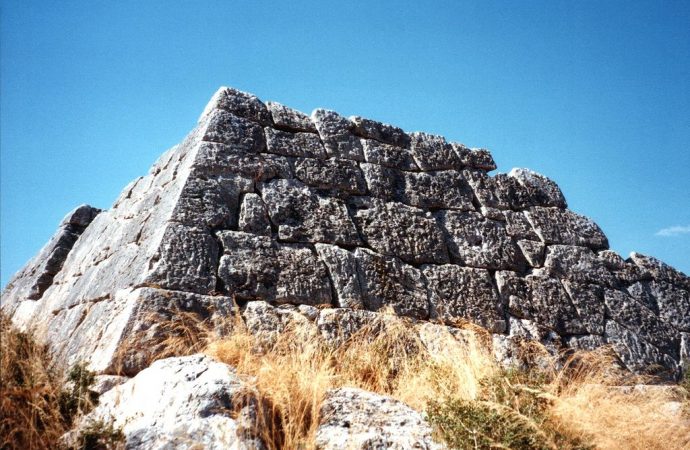Let’s wrap 2019 with some neat archaeological finds of ancient sites around the world.
Friendly warning beforehand: interpretations here are subjective in nature, and may not prove correct should more evidence come along; such is normally the case for archaeological sites of the kinds touched on here.
Gobekli Tepe decoded?
Gobekli Tepe is one of the oldest megalithic sites on Earth, period. Dating to the end of the last glacial maximum, around 12,000 years ago, the site is located in Turkey and comprises many circular constructions of stone piled atop one another over a stratigraphic period spanning 2,000 years.
[su_youtube url=”https://www.youtube.com/watch?v=dal1CChmPtc” width=”500″ height=”320″ responsive=”no”]
Of the T-shaped pillars at Gobekli Tepe, one of the most well-known is “Pillar 43,” also called the “Vulture Stone.” The latest theory about it, and Gobekli Tepe at large, comes from the scientist Martin Sweatman. He suggests the Vulture Stone tells the viewer when the layer of Gobekli Tepe is situated in was constructed, indirectly, by visually indicating the constellations in the sky during the Summer Solstice of its construction.
If this is the case, the relative date of construction of that layer of Gobekli Tepe, the earliest one, is 10,950 BCE (taking the Precession of the Equinoxes into account).
A Greek Pyramid?
The “Pyramid of Hellinikon” is located by the city of Argos in Greece. Original excavations by archaeologists gave a rough date of 400 years BCE, but newer dating of this structure estimate the date of construction at around 2,000 to 2,500 BCE, with the slight possibility of it just predating the oldest pyramids in Egypt.
This pyramid is one of several similar structures built in that area, though it is thought that this one would have been the oldest known.
[su_youtube url=”https://www.youtube.com/watch?v=4DnlhsOOT_8″ width=”500″ height=”320″ responsive=”no”]
Its purpose varies to archaeologists: some say it was an outpost, while others say it was a fort, or even a beacon tower, or tomb. Given that the Pyramid of Hellinikon is situated atop a hill with great views of Argos below, to me, fort or beacon makes the most sense.
Hal Saflieni Hypogeum
Located under Paola, in Malta, this underground labyrinth of corridors and rooms is yet one more megalithic site on that island nation that is difficult to make sense of.
[su_youtube url=”https://www.youtube.com/watch?v=x4jnrhRc-0U” width=”500″ height=”320″ responsive=”no”]
Bearing a passing resemblance to the Turkish site Derinkuyu, though notably smaller, Hal Saflieni is possibly just as old, at 4,000 BCE. It could have been used for around 2,000 years by its builders.
A temple complex once existed atop the Hypogeum, and one particular room inside the Hypogeum bears a window which would have been aligned to the Summer Solstice at the time it was built. Due to the similarities with other megalithic sites on Malta, it is possible that the same people built the Hypogeum.
This Hypogeum was probably used for worship (on the highest levels), as well as a catacombs of sorts (by the presence of skeletons bearing elongated skulls), and even a storage area (on the lowest level).
Is this Elephantine pyramid Egypt’s truly oldest one?
This finding comes from the so-called “Famine Stela,” an inscription written in Ptolemaic times though claiming to be drawn from legends dating to Djoser’s time; so, take it with skepticism.
[su_youtube url=” https://www.youtube.com/watch?v=wYNKxvRmWoc” width=”500″ height=”320″ responsive=”no”]
Elephantine Island, located very close to Aswan on the Nile River, is home to a number of constructions including a temple to Khnum, some obelisks, and a pyramid. But how old are those structures?
The Famine Stela tells of a seven-year drought during Djoser’s reign and his actions to alleviate it. He supposedly had his advisor, the infamous Imhotep (not the guy from the Mummy movies!), travel to where the gods controlling the Nile reside, which turned out to be Elephantine Island and persuade them to bring the Nile floodwaters back.
There, so it says, Imhotep learnt how to tell gold from silver from copper from iron from lapis lazuli, and how to build megalithic structures including temple complexes and pyramids – what he’s renowned for. He returns and Djoser’s reign is then marked by fertility as well as megalithic building the likes of which had never been seen before.
Whether or not the Famine Stela has any truth to it whatsoever, Elephantine Island does indeed contain a small, ruined, stepped pyramid that many date to around the 3rd Dynasty but could still date to just before Djoser’s time.
This pyramid is stone-work through-and-through and was likely just a monument. However, there’s the slightest chance it was the inspiration for Djoser’s pyramid.
Monte D’Accoddi pyramid
Located on the island of Sardinia, Monte D’Accoddi theoretically dates to 4,000 BCE. It bears a striking resemblance to other pyramidal structures such as ziggurats and Mesoamerican pyramids. Likewise, its function may have been similar to those other structures.
[su_youtube url=”https://www.youtube.com/watch?v=BlUtUGTEoUc” width=”500″ height=”320″ responsive=”no”]
At least two superimposed structures exist at the site, with the first one built by the Azidi culture and the other built several hundred years later by a different culture. The pyramid is part of a much larger complex.
Its alignment, with a ramp directed towards the Southern Cross constellation as it would’ve been located around 4,000 to 5,000 BCE, helps solidify its date of construction.
As with the other pyramidal structures of the world, it could be that the Monte D’Accoddi pyramid was built by people native to the area but possibly with knowledge gleaned from one or more travelling people from elsewhere.
Oldest Human cave art found to-date
Found in Indonesia, the cave art depicting hybrid-people hunting odd-sized ice-age animals dates to 44,000 years ago, making it the oldest story-telling cave art on Earth.
[su_youtube url=”https://www.youtube.com/watch?v=hs6DVTSOEOw” width=”500″ height=”320″ responsive=”no”]
Unlike most cave art of this time, which depict scenes of daily life or were used for ritual purposes, this cave art likely would have told a story, myth, or legend – similar to what ancient civilizations like Egypt and Mesopotamia did on their temple walls.
Could this have been a chapter or two from the “Bible” of the ones who made it?
12,500-year-old American site
This is prehistoric site uncovered by chance in Connecticut, United States. It dates potentially to 12,500 years ago and consists primarily of temporary-structure posts and over 15,000 various artifacts telling of a “Paleo-Indigenous” culture.
[su_youtube url=”https://www.youtube.com/watch?v=Z7A_i3fn2WI” width=”500″ height=”320″ responsive=”no”]
Among the artifacts included “atlatls” – or, “spear/arrow throwers” – a common tool of the time that is thought to have been the precursor to the bow and arrow, and flint tools and heads of various forms.
Image Credit: Schuppi / Wikimedia Commons (CC-BY-SA-2.0 and GFDL)
Videos from the Youtube channel Ancient Architects, by Matt Sibson





